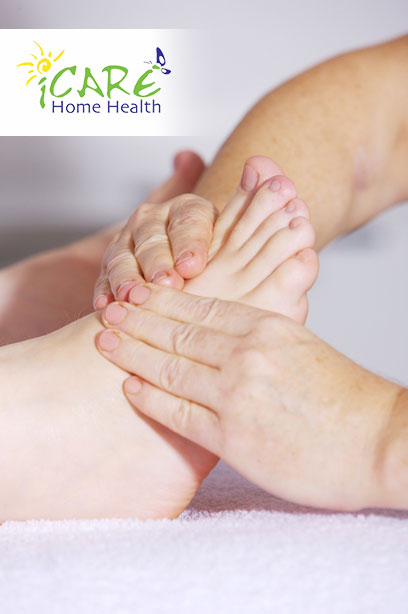5 Care Practices to Prevent Diabetic Foot Problems

Many people with diabetes also suffer from foot issues. This is because diabetes can cause nerve damage over time, which may cause you to lose feeling in your feet. Without this ability, it will be hard to feel pain or know if you have a foot issue that needs to be addressed. Diabetes may also cause reduced blood flow so that existing wounds on your feet are slow to heal.
In the most severe cases, these foot issues could lead to critical health risks and amputation. That’s why diabetic foot care is essential to stay on top of any existing issues and address new ones. Below are five recommended tips for diabetics to keep feet healthy.
1. Inspect Your Feet Daily
If you’re losing feeling in your limbs, the only way to monitor for issues is by looking at your feet each day. You’ll be able to find any new issues early on before they become severe and require diabetic wound care. Choose either the beginning or end of each day to perform this task and stick to it.
Begin by inspecting both the soles and tops of your feet and in-between your toes. Keep an eye out for diabetic sores on feet, blisters, warts, corns and ingrown toenails. If you’re not able to reach your feet, try using a mirror or asking a family member or friend to help.
2. Wash Feet Each Day
Washing your feet each day is essential for good hygiene. Be sure to use warm water and avoid soaking your feet for too long which can lead to dry skin. After washing, dry your feet thoroughly and pay special attention between your toes. Use baby powder or cornstarch to absorb extra moisture and prevent infections.
3. Smooth Corns and Calluses
Too much rubbing or pressure on your feet can cause rough spots. If you have corns or calluses, speak to your doctor. This may be a type of diabetic wound care that you can treat at home. You may be able to use a pumice stone to smooth the skin after bathing but verify with your doctor that it is safe to do so.
4. Trim Your Toenails
Part of diabetic foot care includes trimming your toenails regularly. After your feet are clean and dry, use nail clippers to trim your toenails straight across. Next, smooth your nails gently with an emery board or nail file. If you can’t reach your feet or are concerned about your toenails, consult with a foot care specialist.
5. Always Wear Shoes and Socks
Even indoors, be sure to wear shoes at all times. Walking in socks or bare feet may cause you to step on something that injures your foot. By wearing socks with your shoes, you can prevent blisters and other sores from developing.
Foot Care Support is Available
Caregivers from iCare Home Health in Oakville are available to provide support and advice for individuals who need help with foot care. This includes nail trimming, preventative care and treatment for diabetic sores on feet.
Whether you live in Oakville or another part of the GTA, professional caregivers from iCare’s Nurse at Home program can help improve your level of foot care and comfort. You can also book at appointment at one of our foot care clinics in Pickering and Oshawa.

